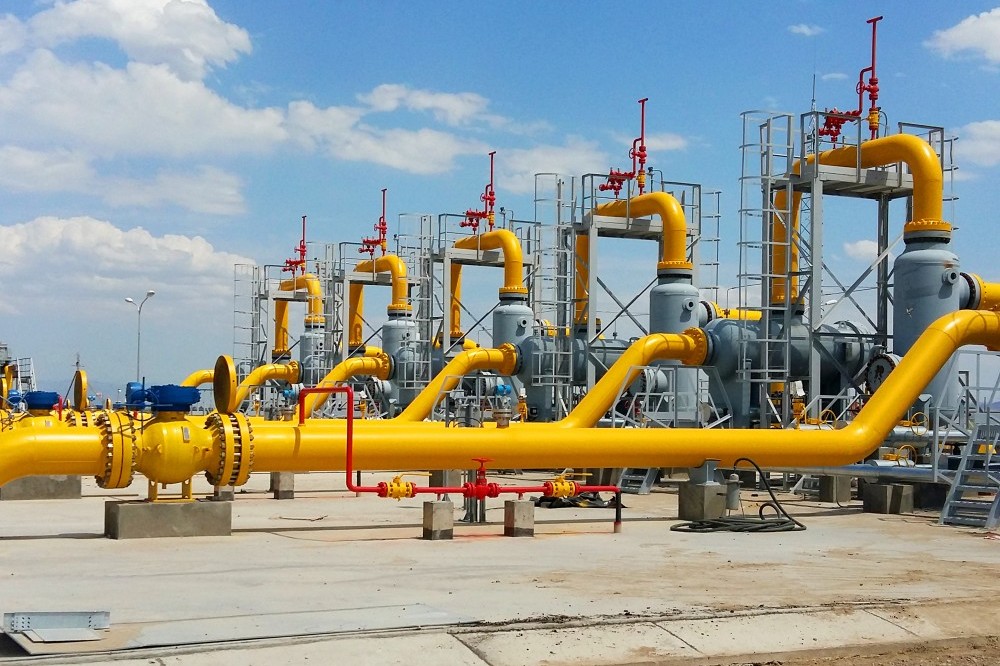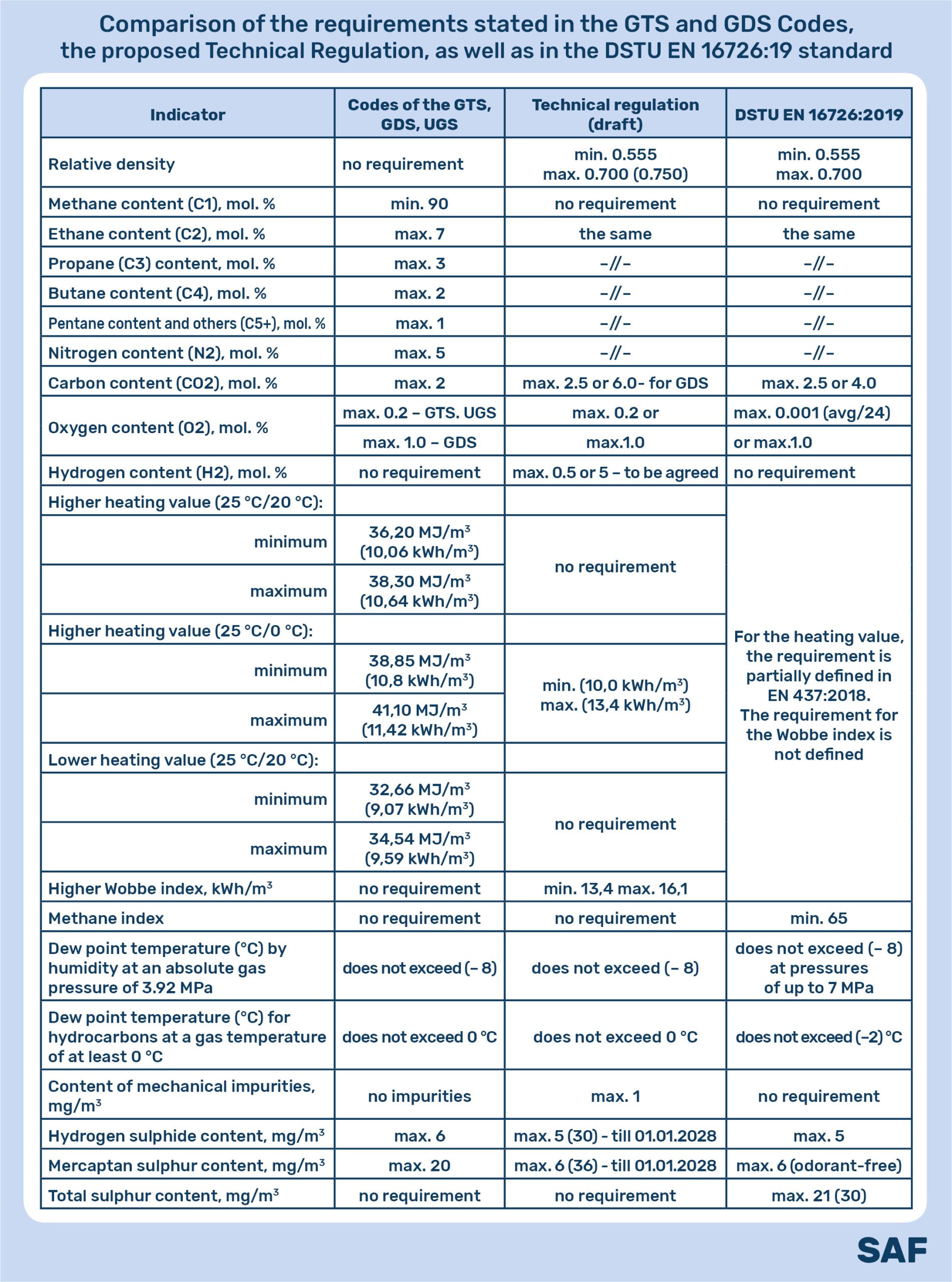On 18 March 2024, the draft resolution of the Cabinet of Ministers of Ukraine “On Approval of the Technical Regulations for Natural Gas” was published.

This Technical Regulation sets out the requirements for natural gas, including biomethane, which is put into operation, provided on the market and transported by the gas transmission system of Ukraine, distributed by the systems of the Gas Distribution System Operator, injected/extracted to/from underground gas storage facilities of the Underground Gas Storage Operator, liquefied and regasified by LNG facilities. This Technical Regulation does not apply to compressed natural gas and synthetic gases.
UABIO experts have analysed the technical requirements of this regulation regarding biomethane and the conditions for its supply to the gas transmission system (GTS) and gas distribution system (GDS).
First of all, the possibility of supplying natural gas and biomethane to the GTS and GDS is determined by its compliance with the quality requirements specified in the Codes of Gas Transmission and Gas Distribution Systems. In particular, both Codes state that producers of biomethane or other types of gas from alternative sources have the right to access gas transmission and distribution systems, gas storage facilities, LNG facilities and to connect to gas transmission and distribution systems, subject to compliance with technical and safety standards in accordance with the law and provided that biomethane or other types of gas from alternative sources comply with the laws and regulations governing the quality of natural gas by their physical and chemical characteristics.
The proposed Technical Regulation is such a regulatory act that establishes requirements for the quality characteristics of biomethane, as it, in particular, defines biomethane as biogas that meets the requirements for natural gas for supply to the GTS or GDS of this Technical Regulation by its physical and chemical characteristics. In addition, the requirements for natural gas set out in the GTS Code are applied in the part that does not contradict the requirements set out in the Technical Regulations on Natural Gas.
Let’s compare the requirements stated in the GTS and GDS Codes, the proposed Technical Regulation, as well as in the DSTU EN 16726:19 standard, which is the adaptation of the relevant European standard in Ukraine, which sets out gas quality requirements to ensure the open gas stream between CEN[1] member states and security of supply, taking into account the impact on the entire production and supply chain from gas production and supply to the end consumer.

The above data shows that this Technical Regulation practically does not introduce any stronger standards than those currently applied by GTS, UGS and GDS operators. Most of the indicators set out in the Regulation meet the requirements of the European standard EN 16726.
As a result, for some indicators, such as carbon dioxide, the regulation is even less stringent than the GTS Code (2.5% and 2.0%, respectively). In addition, the regulation sets a wider range of permitted values for the higher heating value. Temporarily, until 2028, a less stringent hydrogen sulphide content standard of 30 mg/m3 will also apply (the Code is 6 mg/m3). After January 1, 2028, the standard will be 5 mg/m3, but higher levels are allowed if the total sulphur content does not exceed 21 mg/m3. The same applies to the requirement for mercaptan sulphur content – 36 mg/m3until 2028, and then 6 mg/m3, but it can be higher under the same condition.
The new standard for hydrogen content is 0.5%, but it can reach 5% in agreement with network operators. It also introduced standards for relative density and Wobbe index, which had already been measured in accordance with the requirements of the GTS Code.
With regard to oxygen content, the regulations confirmed the standards specified in the GTS, GDS, and UGS Codes, i.e. a maximum of 0.2% for GTS and UGS networks and up to 1% for all other networks. Moreover, the Technical Regulations allow the oxygen content up to 1% for GTS or UGS networks, but only upon agreement with the relevant operator. Also, the GTS Operator cannot refuse to accept gas with 1% oxygen, unless the operator of an adjacent GTS, UGS facility or direct consumer has refused to accept gas with such a fraction of oxygen.
In terms of oxygen content, the standards under the Technical Regulation are less stringent than those of EN 16726, which require no more than 0.001% (as a moving average over 24 hours) at system entry points and interconnection points, but may be 1% if it is proven that the gas is not supplied to installations sensitive to higher oxygen content.
Thus, it should be noted that the proposed Technical Regulation does not deteriorate the conditions for biomethane producers’ access to gas networks, as it does not introduce more stringent requirements for the physical and chemical characteristics of gas, and even introduces less stringent standards for some indicators. In addition, this regulation complements the requirements of the GTS and GDS Codes, in particular with regard to biomethane, and fills a certain regulatory gap that arose after the termination of GOST 5542-87 “Natural Combustible Gases for Industrial and Domestic Use. Technical specifications”.
We are grateful to the developers of the Technical Regulation, in particular the team of the Ministry of Energy of Ukraine and other involved agencies, for a high-quality document that takes into account the interests of biomethane producers.
We would like to thank Volodymyr Kramar, an expert of the Bioenergy Association of Ukraine, for his insightful review.
[1] The European Committee for Standardisation (Comité Européen de Normalisation, CEN) is an international non-profit organisation whose main goal is to facilitate trade in goods and services through the development and implementation of European standards (EN).